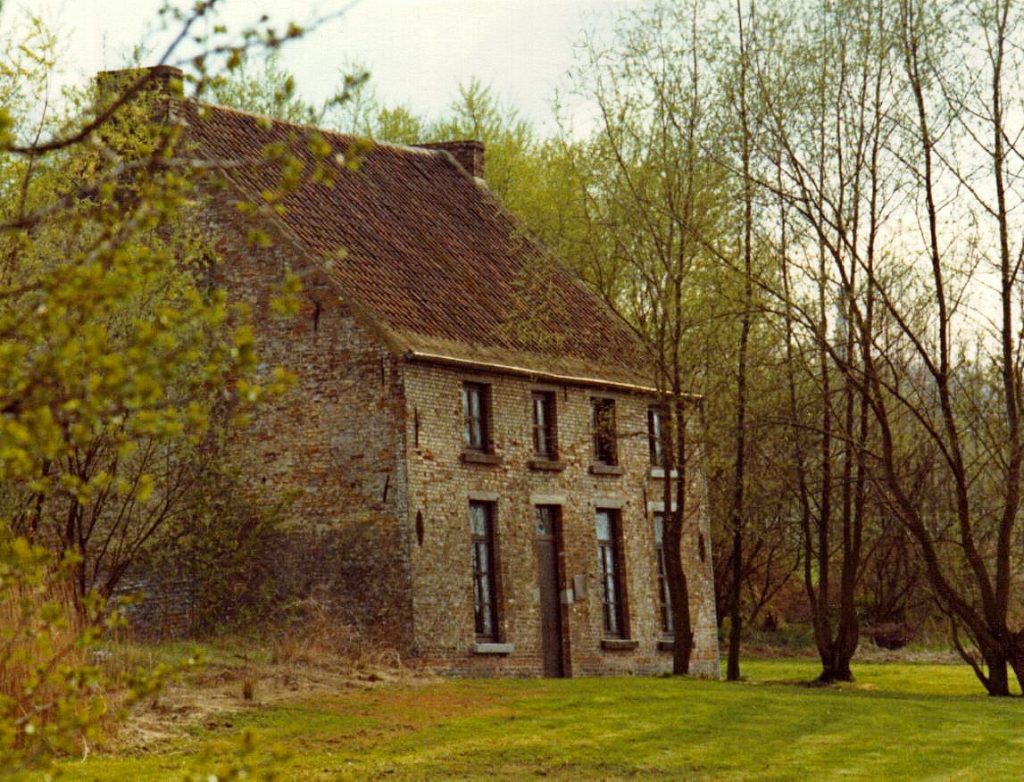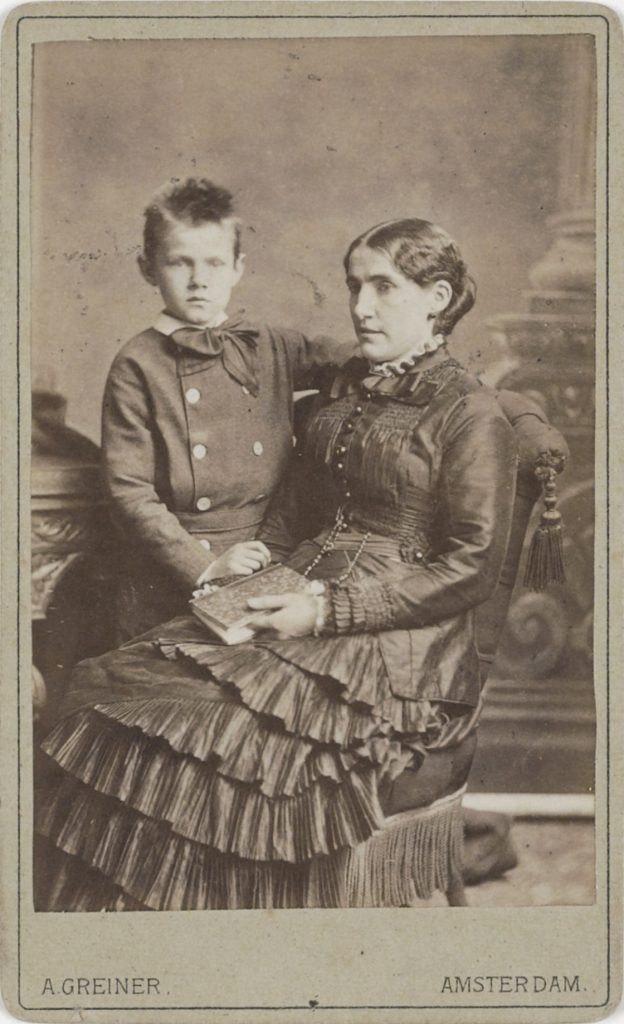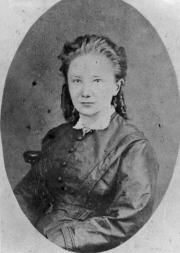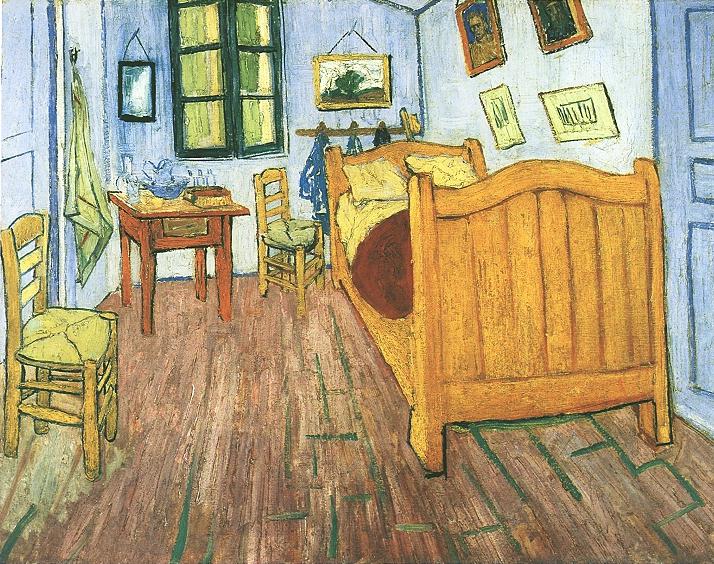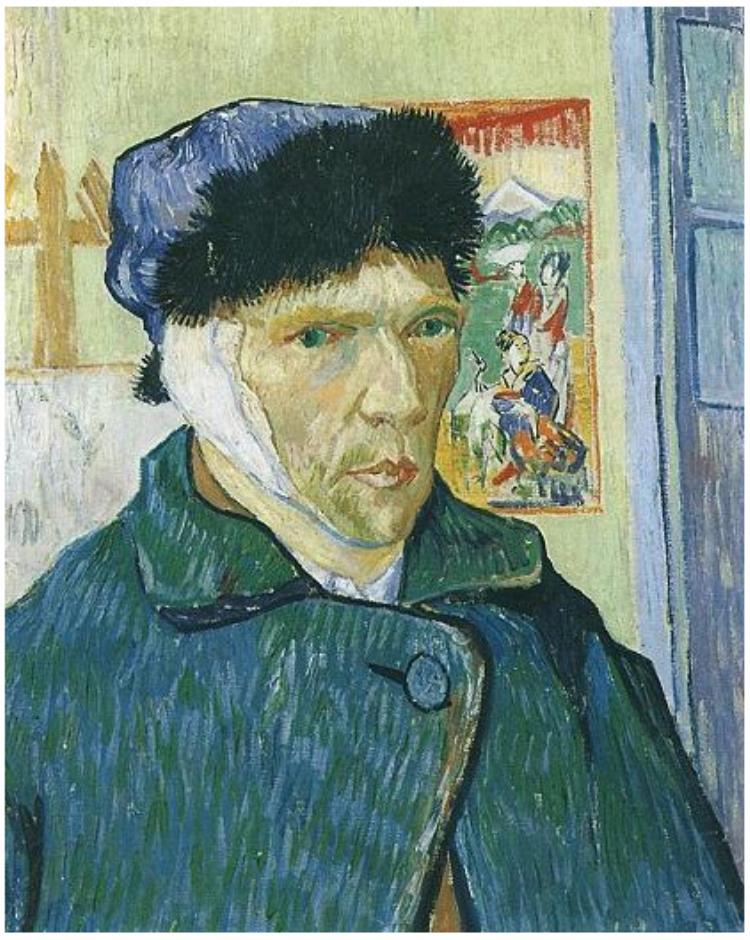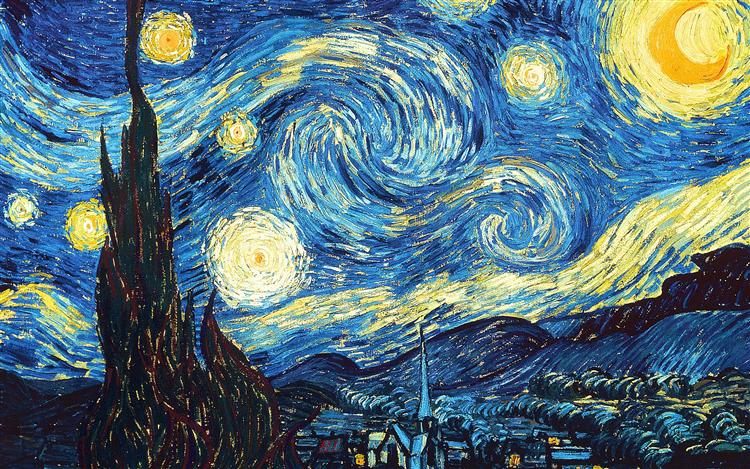Vincent van Gogh is a famous Dutch artist and is considered to be one of Western art’s most influential artists. During his lifetime, he only ever sold one painting out of the approximately 860 paintings and 2,100 works of art he created overall. He showed signs of mental instability from a young age, and committed suicide at the age of thirty-seven. Van Gogh became famous following his suicide and is most notably known for his works Starry Night, Sunflowers, Bedroom in Arles, and others.
On March 30, 1853, Vincent Willem van Gogh was born in Groot-Zundert, Netherland to Theodorus van Gogh and Anna Cornelia Carbentus. His father was a minister of the Dutch Reformed Church and his mother, a nature loving artist. Van Gogh was named for his stillborn brother who was born exactly a year before. Anna and Theodorus had three more sons and three more daughters after the birth of Vincent. They were supplied with a house, a maid, two cooks, a gardener, a carriage, and a horse from the church. Anna made sure to teach her children that it was their duty to uphold the family’s status. He grew up interested in art, and his mother encouraged him to draw because of her love of art.
In 1860, van Gogh was sent to a village school after being taught by his mother and a governess at home. When he was sent to boarding school in Zevenbergen, he began to feel abandoned and tried to convince his parents to send him home in 1864. They sent him to a middle school in Tilburn instead, yet he was still unhappy. He was taught art by the successful Parisian artist Constantijn C. Huysmans at the school, though Huysmans lessons were not very effective for van Gogh. He returned home in March of 1868.
His uncle got him a position at Goupil & Cie, an art dealership, in July of 1869. In 1873, van Gogh finished training and was transferred to work for Goupil & Cie in London. He was happy with his job and very successful at it as well, earning more than his father at only twenty years old. Anna, his mother, would later say that van Gogh’s time as an art dealer was the best and happiest year of his life. When he confessed his love towards the landlady’s daughter, Eugénie Loyer, she rejected him due to being secretly engaged. This caused him to become more isolated and involved in his religion. In 1875, his uncle and father had him transferred to Paris, though van Gogh was unhappy there and was dismissed the next year.
Van Gogh moved back to England in April of 1876. He began working as a supply teacher in a boarding school in Ramsgate, though he was not paid. He accompanied the proprietor when he moved to Isleworth, Middlesex. Not long after, van Gogh stopped working for him and became an assistant to a Methodist minister. He went back home for six months in 1876 for Christmas and worked in Dordrecht at a bookstore. This was yet another unhappy position for him, and he would often spend his time translating Bible passages into English, French, and German or doodling. He became more and more invested in his religion as he grew older.
Because of his desire to become a pastor, his family sent him to live with Johannes Stricker, his uncle and respected theologian living in Amsterdam. He prepared to take the theology entrance exam for the University of Amsterdam, but failed. In July of 1878, he left Amsterdam. Van Gogh moved near Brussels to take a three-month course at a Protestant missionary school, the Vlaamsche Opleidingsschool in Laeken. He was able to take a post as a missionary at Petit-Wasmes in Belgium the following January. While there, he slept on straw in a small hut because he had given up his lodging at a bakery to a homeless person. Church authorities dismissed him for this.
For a while he stayed in Cuesmes, Belgium but returned to Etten not long after to live with his parents. His father was thinking about sending him to the lunatic asylum located in Geel, so van Gogh left his parents house in March of 1880. So, he went back to Cuesmes that August and lived with a miner for a few months. He began to draw more often, recording the scenes and people surrounding him. His father recommended he study with Willem Roelofs, a Dutch artist. In November, he registered at the Académie Royale des Beaux-Arts and studied anatomy and the standard modelling and perspective rules.
The next year in April, van Gogh returned to his parents home in Etten. He kept drawing and would use neighbors for subjects. A few months later in August of 1881, Kee Vos-Stricker, his recently widowed cousin came, to Etten. The two would often take long walks together. Van Gogh even proposed and declared his love to her, but Kee, who was seven years older with an eight year old son, refused. So, he went to The Hague after she went back to Amsterdam so he could sell paintings and to meet with Anton Mauve, another cousin. Before returning to Etten, Mauve, a successful artist, advised van Gogh to try charcoal and pastels, and he did.
Once again, he left Etten that November to go to Amsterdam to try and talk to Kee. She refused to speak with him, so he put his left hand in a flame of the lamp and told her parents to let him visit her for the amount of time he could keep his hand in the flame. Van Gogh would later assume that his uncle blew out the flame, and he made it very clear that Kee would not be marrying him. They especially rejected his offer because he did not have a job and was unable to support even himself. For the rest of the month, he studied under Mauve, who introduced him to watercolors. He returned home for Christmas, but got in an argument with his father over not going to church. That same day, he left once more for The Hague. Van Gogh still had hardly any money, and was just barely able to hire people off the streets to model for him, which Mauve greatly disapproved of. Van Gogh the suffered through gonorrhoea, causing him to be in the hospital for three weeks. Afterwards, he began borrowing money from his brother, Theo, and did his first oil paintings.
Mauve and van Gogh suffered a falling out, and he stopped returning Mauve’s letters by March of 1882. This was mainly because van Gogh had let Clasina Maria “Sien” Hoornik, a pregnant alcoholic prostitute, move in with her young daughter. She was often sickly, and he would help nurse her back to health. Sien would model for him as well. He even thought of marrying her so that she could have help caring for her children and stay off the streets. However, when his father and family found out about this, they urged him to abandon the relationship and return home. When Sien gave birth to a son named Willem in June of 1882, van Gogh seemed to become much happier. He ended up leaving Sien and her children during the Autumn of 1883. She was unable to provide for her children after and had them live with her mother and brother and would eventually commit suicide in 1904. Van Gogh moved to Drenthe so he could work on his career as an artist. He was lonely in Drenthe though, and went to stay with his parents that December in Nuenen, North Brabant.
While in Nuenen, van Gogh worked on painting and drawing weavers and cottages. He fell in love with a neighbor’s daughter, Margot Begemann, in August of 1884. It was clear that she was much more in love, and the two decided to get married. However, both of their families opposed the marriage. This caused Margot to take an overdose of strychnine. Luckily, van Gogh was able to get her to the hospital in time. His father then died of a heart attack on March 26, 1885. He stayed in Nuenen for two years, completing almost 200 oil paintings many drawings and watercolors. His works were mainly in somber palettes and color tones, unlike his paintings that were full of color.
A Parisian art dealer showed interest in van Gogh’s works early in 1885. He had his first major work, The Potato Eaters, finished that May to go along with his “peasant character studies” series. His brother Theo had written to van Gogh earlier to tell him to prepare paintings that would be ready to exhibit. Theo responded a few months later that his paintings were too dark, the opposite of what dealers wanted. His works were first exhibited publicly that August in The Hague.
Van Gogh moved to Antwerp in November of 1885. He rented a small room that was located above a paint dealer’s shop. Instead of using money sent to him by Theo for food, he used it on paint supplies, causing him to eat poorly and live in poverty. He wrote to Theo the following February stating that he had only eaten six hot meals since May of 1885. His teeth ended up becoming very loose, putting him in a lot of pain. Still, he used his money to buy art supplies and spent his time in museums and studying color theory. He began drinking heavily once more, and was ill for most of February from working too hard, eating poorly, and smoking too much.
In March of 1886, van Gogh moved to Paris and shared an apartment with his brother. He studied with Fernand Cormon at his studio. Him and Theo moved into a larger flat that June, and he began painting portraits of friends, still life painting, scenes in Montmartre, and many other things, adding more color to his work to try and make sales. The two brothers paid to publish a book on Adolphe Monticelli’s painting after seeing a portrait of him and bought his works to decorate their flat. He continued to work at Cormon’s studio in April and May of 1886 where he met and befriended many other artists. Van Gogh and Theo had a bit of a falling out at the end of the year because Theo found it hard to live with him. They were at peace once again early the next year when van Gogh moved into Asnières, a suburb in northwestern Paris. He also began experimenting with pointillism. Around the end of 1887, van Gogh befriended and exchanged works with Paul Gauguin. After two years, he left Paris in February of 1888, having completed over 200 paintings.
He moved to Arles next from being ill because of drinking too often and smoker’s cough. For two months, van Gogh was accompanied by Christian Mourier-Petersen, a Danish artist. He lived in the “little yellow house” and completed over 200 paintings and 100 drawings and watercolors. Van Gogh found Arles to be an enchanting place with the landscape and town. His most famous from his time in Arles was Bedroom in Arles painted in 1888. It is now exhibited at the Van Gogh Museum in Amsterdam.
Gauguin agreed to visit van Gogh in Arles in 1888. Awaiting his arrival and hoping they could become friends, van Gogh painted another one of his most famous works, Sunflowers. On October 23, Gauguin arrived after van Gogh had pleaded for him to come and had bought an extra bed in hopes Gauguin would come live in Arles. Gauguin completed one painting: Van Gogh Painting Sunflowers. In December the two visited Montpellier and visited museums with works from their friends. Van Gogh only wanted to be friends with Gauguin and be seen as his equal, but Gauguin’s arrogant and domineering attitude caused them to argue often.
The exact events that caused van Gogh to cut off his ear are unknown. Gauguin would later claim that he had gotten in an argument with him on December 23, 1888 after being stuck in the house due to heavy rain. When Gauguin left the house, van Gogh is said to have followed him and gone at him with an open razor. He then claimed that van Gogh returned to the house after being assaulted by voices and severed off his left ear with a razor. It is unknown if he did it all at once, or in different parts. The next morning, a policeman found him unconscious and rushed him to the hospital. Because too much time had passed, the doctor was unable to reattach his ear. Van Gogh did not have any recollection of the event whatsoever. When van Gogh was ordered by the police to be placed in hospital care, Theo rushed up to Arles upon being notified by Gauguin. Gauguin fled Arles soon after, never to be seen by van Gogh again, though they did continue to correspond for some time On January 7, 1889, van Gogh recovered from the incident and returned to the Yellow House. By March, he had returned to the hospital and his home had been shut down. He left Arles in April and admitted himself to an asylum in Saint-Rémy-de-Provence on May 8, 1899. While there, he often painted the asylum garden and completed The Starry Night, perhaps his most famous painting. Van Gogh suffered through a severe relapse from February-April of 1890.
Van Gogh left Saint-Rémy in May of 1890 so he could move closer to Dr. Paul Gachet and Theo. Gachet, an ametur artist, had been able to treat many other artists, and was recommended to him by Camille Pissarro. However, van Gogh found Gachet to be as ill as he was. He continued to do many oil paintings while in Auvers-sur-Oise.
He shot himself on July 27, 1890 in the chest with a revolver. It is unknown if he had shot himself in a wheat field or local barn because no witnesses were present. The bullet did not damage his internal organs severely and was most likely stopped by his spine. Van Gogh walked back to Auberge Ravoux where to doctors attended him. A surgeon was not present, so the bullet was unable to be removed. Theo rushed to his brothers side the next morning, finding him happy and in good spirits. His health began failing within a few hours, and he suffered through an infection that the doctors had not treated. Early on July 29, 1890, the thirty-seven year old Vincent van Gogh died in Auvers-sur-Oise, France. Just earlier that year, he had sold his first and only painting to Anna Boch that he called The Red Vineyard at Arles.



